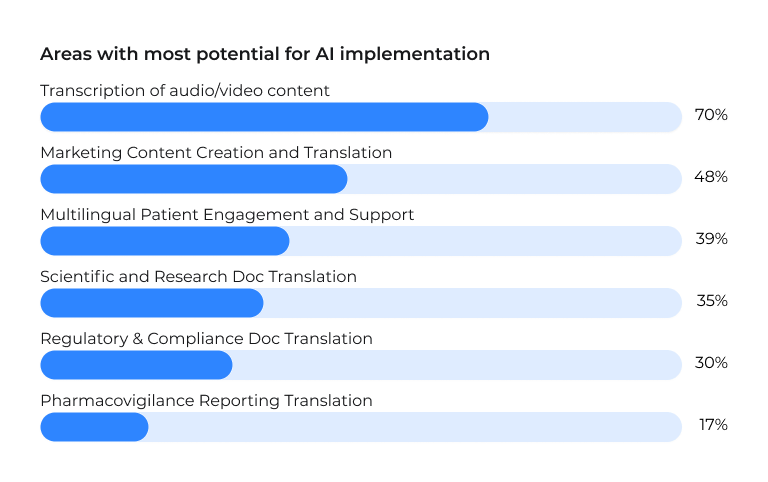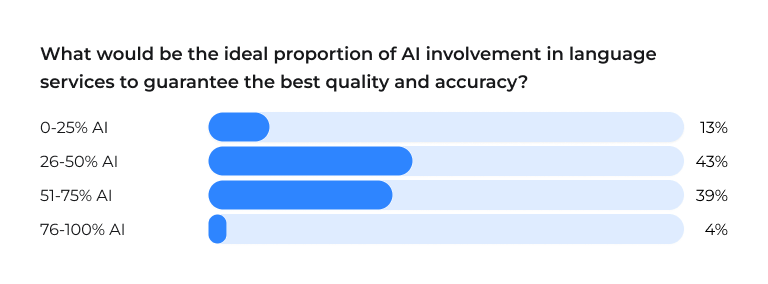The Growing Buzz Around AI in Language Services
The life sciences industry is increasingly recognizing how AI can revolutionize language services, and our survey results confirm this trend. A whopping 70% of respondents are familiar with AI applications for translation and localization, and 61% of companies have already integrated AI into their language-related tasks, such as translation, interpreting, and content creation. This shows that AI is quickly becoming a go-to tool for streamlining language services in life sciences.


AI-driven solutions like machine translation (MT) and large language models (LLMs) offer a range of benefits. They can accelerate content creation and distribution, helping companies meet tight regulatory deadlines and ensuring that vital information reaches authorities and stakeholders quickly. This can be a game-changer, speeding up the time-to-market for new products and therapies.
But it's not just about speed. AI can also enhance accuracy and efficiency in various language-related tasks:
- Transcription of Audio and Video Content (70%): AI-powered tools can transcribe clinical trials appointments, interviews, and other audio and video content, freeing up valuable time and resources.
- Marketing Content Creation and Translation (48%): AI can help life sciences companies reach a global audience by generating high-quality marketing content in multiple languages.
- Multilingual Patient Engagement and Support (39%): AI-powered chatbots and virtual assistants can provide support in multiple languages, improving patient satisfaction and helping them stick to treatment plans.
- Pharmacovigilance Reporting Translation (17%): AI can streamline the translation of adverse event reports, enabling faster identification and response to safety signals.
Finding the Right Balance: Human Expertise and AI
While AI offers huge potential, it's important to remember that relying solely on AI for language services comes with challenges. AI models need high-quality data to produce accurate translations, and they may struggle with the nuances of complex scientific language, cultural context, and ethical considerations.

Our survey found that 43% of respondents believe that an ideal scenario involves 26-50% AI involvement in language services. This highlights the importance of human oversight and intervention. A hybrid approach, combining the strengths of human linguists with AI tools, can lead to the best results.
One such approach is machine translation post-editing (MTPE), which uses machine translation, or AI for the initial translation and then has human experts review and refine the output. This ensures both speed and accuracy, delivering high-quality translations.
As the 2024 Slator report highlights, MTPE is gaining traction in the life sciences industry, proving its value in navigating time-sensitive scenarios and ensuring accurate communication. For instance, during clinical trial submissions, where tight regulatory timelines can be challenging, MTPE can help expedite the translation of requests for information from health authorities. Similarly, in pharmacovigilance, where rapid reporting of adverse events is crucial, MTPE can ensure timely and accurate communication with regulatory agencies.
We can now go several steps further to reduce the scope of human involvement by carefully tested automated post editing (APE) and automated quality estimation (APE), all the while balancing risk management and efficiency.



























